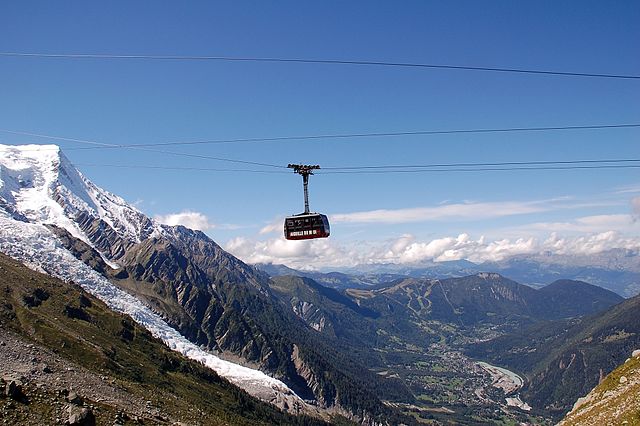An aerial tramway, aerial tram, sky tram, aerial cablecar, aerial cableway, telepherique, or seilbahn is a type of aerial lift which uses one or two stationary ropes for support while a third moving rope provides propulsion. With this form of lift, the grip of an aerial tramway cabin is fixed onto the propulsion rope and cannot be decoupled from it during operations.
In comparison to gondola lifts, aerial tramways generally provide lower line capacities and higher wait times.
The Portland Aerial Tram in Portland, Oregon, US
Aerial tramway in Engadin, Switzerland, suspended on two track cables with an additional haulage rope
The Port Vell Aerial Tramway in Barcelona, Spain
An aerial tramway across the Yangtze river in the Chongqing CBD
An aerial lift, also known as a cable car or ropeway, is a means of cable transport in which cabins, cars, gondolas, or open chairs are hauled above the ground by means of one or more cables. Aerial lift systems are frequently employed in a mountainous territory where roads are relatively difficult to build and use, and have seen extensive use in mining. Aerial lift systems are relatively easy to move and have been used to cross rivers and ravines. In more recent times, the cost-effectiveness and flexibility of aerial lifts have seen an increase of gondola lift being integrated into urban public transport systems.
Plateau Rosa aerial tramway, in Cervinia, Italy, moves 120 people at a time to a 3,480 m (11,420 ft) glacier.
8-passenger gondola lift in Panticosa Ski Resort, Spain.
Cable car in Engadine, Switzerland, suspended on two support cables with an additional haul rope.
Cable Car to the Aiguille du Midi, France, suspended on one support cable with an additional haul rope.







